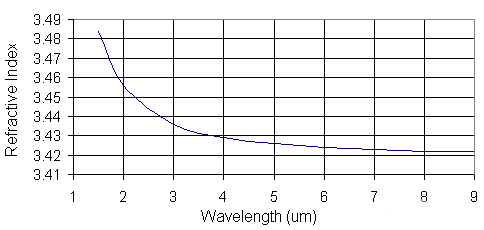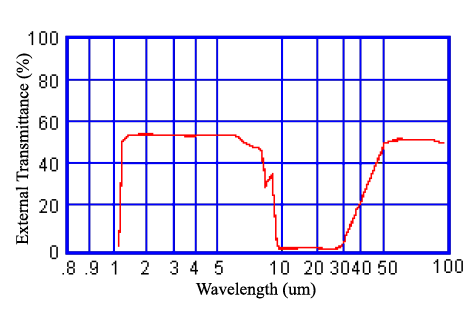|
Silicon in comparison to germanium is both abundant and much less expensive. As the most economic IR material, silicon is used primarily for semiconductor applications. It can be produced in either mono or polycrystalline form by the Czochralski crystal growth method, float zone method or casting. Optical grade silicon has very good transmission from 1.2um to 7um. Silicon, unlike germanium, is acceptable as both p-type and n-type for IR applications.
| |
 |
| |
Figure 1: Refractive index as a function of wavelength
|
| |
 |
| |
Figure 2: External transmittance curve for Silicon
|
| |
Coefficient of Thermal Expansion
25 °C (/°K) |
2.6X10-6
|
|
| |
Thermal Conductivity (W/m·K) |
163
|
|
| |
Melting Point (°C) |
1690
|
|
| |
Density (g/cm3) |
2.33 |
|
| |
Young's Modulus (GPa) |
103.91
|
|
| |
Poisson's Ratio |
0.28
|
|
| |
Shear Modulus (GPa) |
79.92
|
|
| |
Mohs Hardness |
7
|
|
| |
Table 1:Silicon Thermal and Mechanical Properties
|
|
IR Materials :
|


